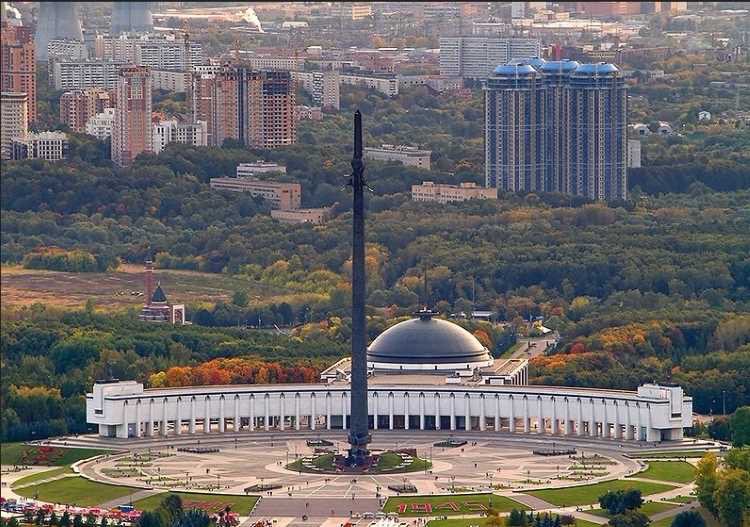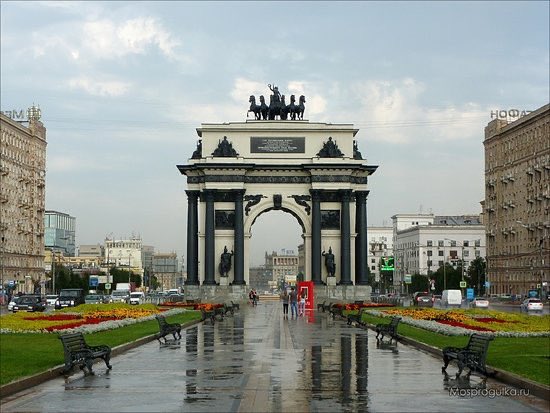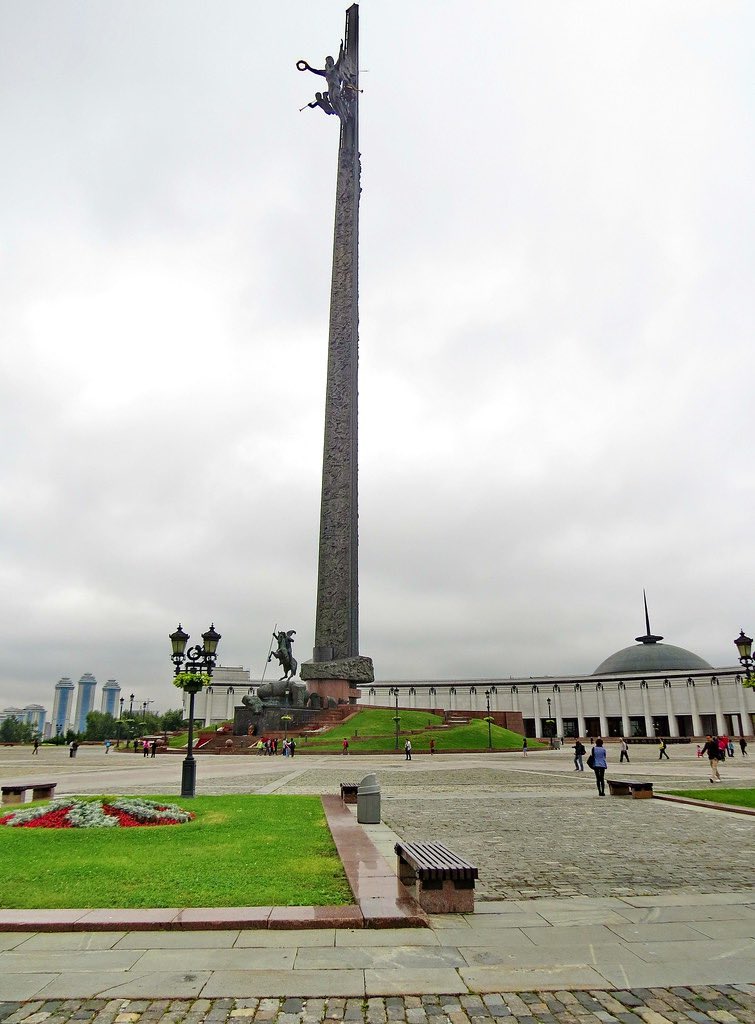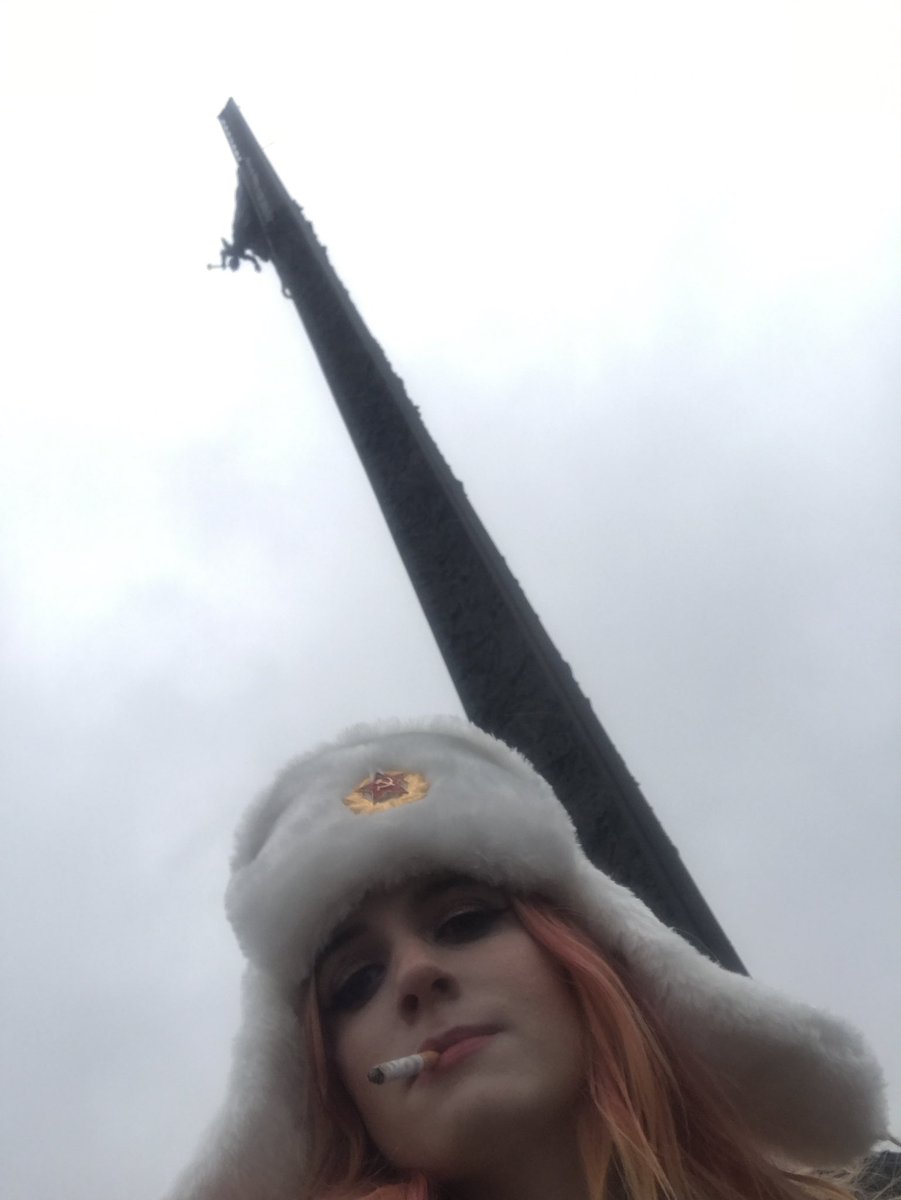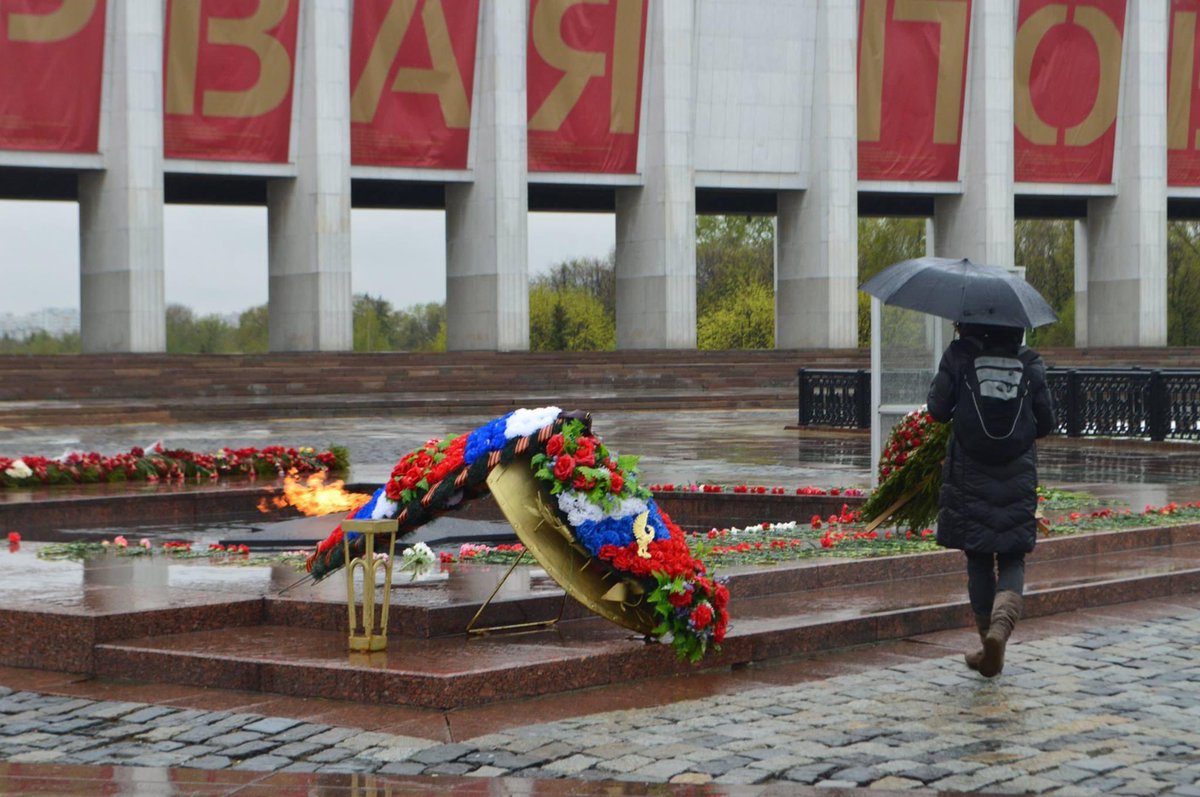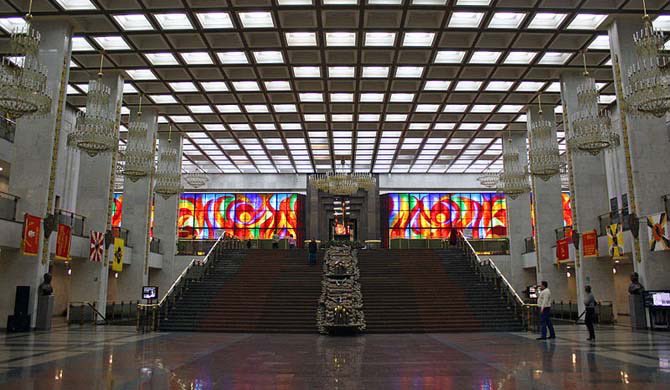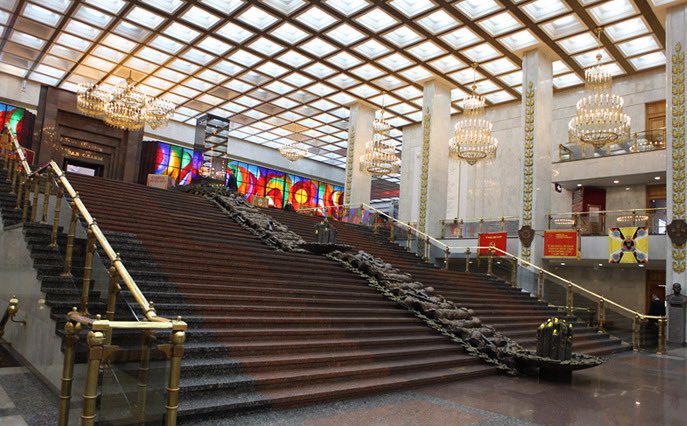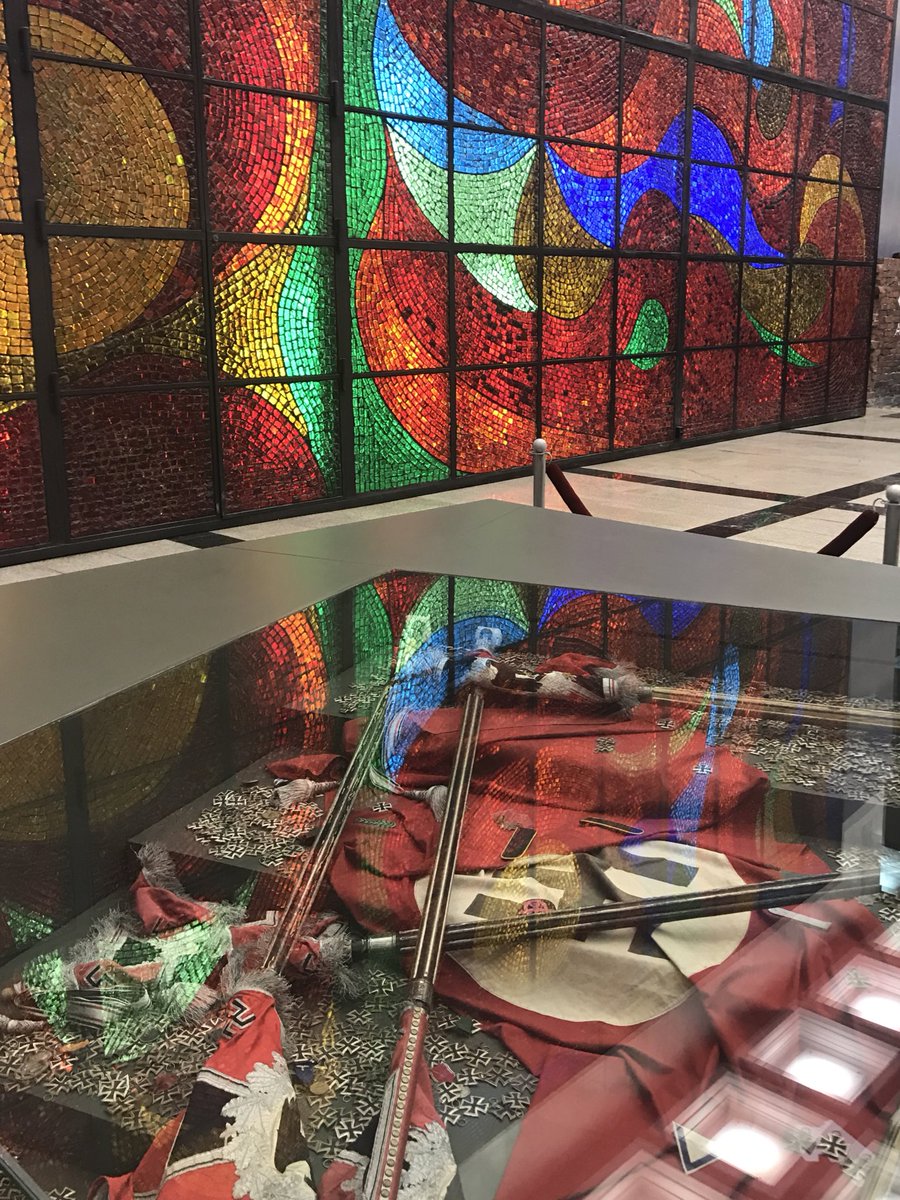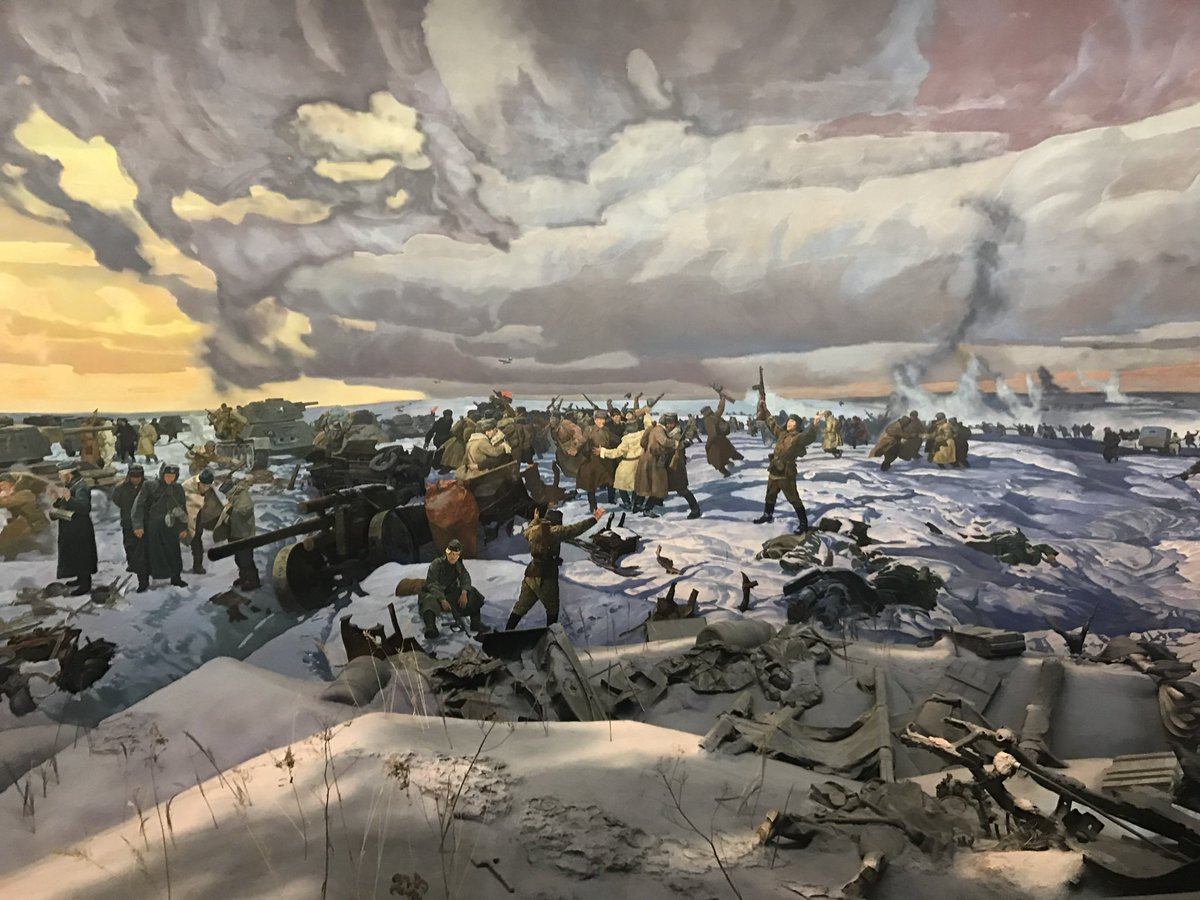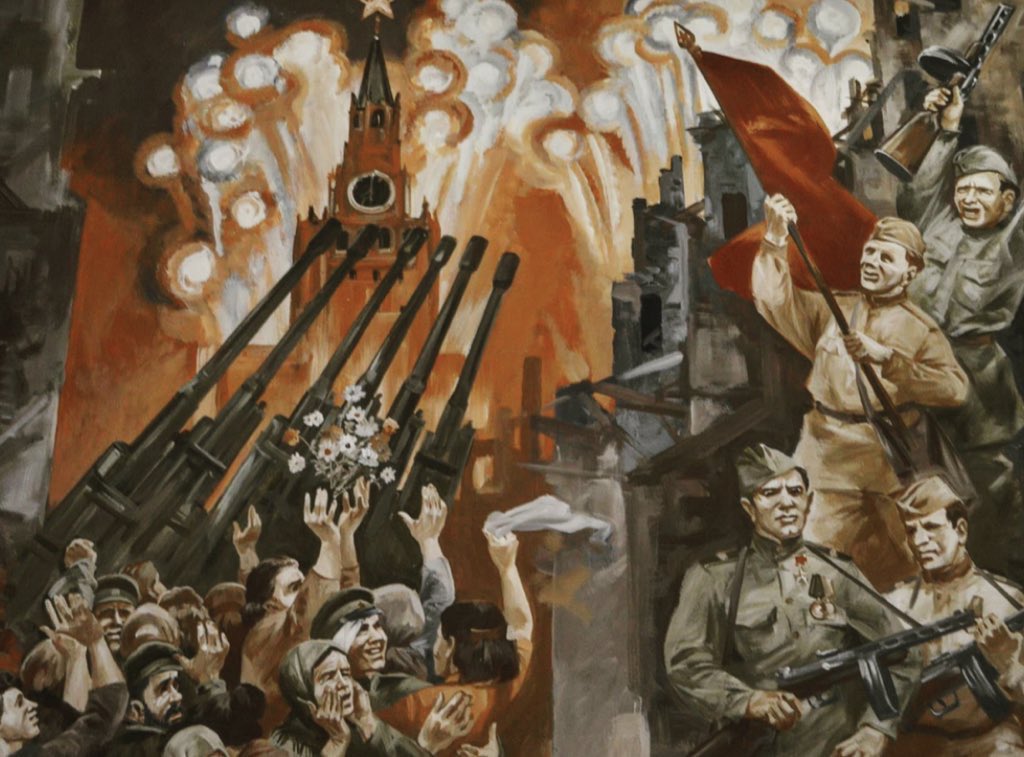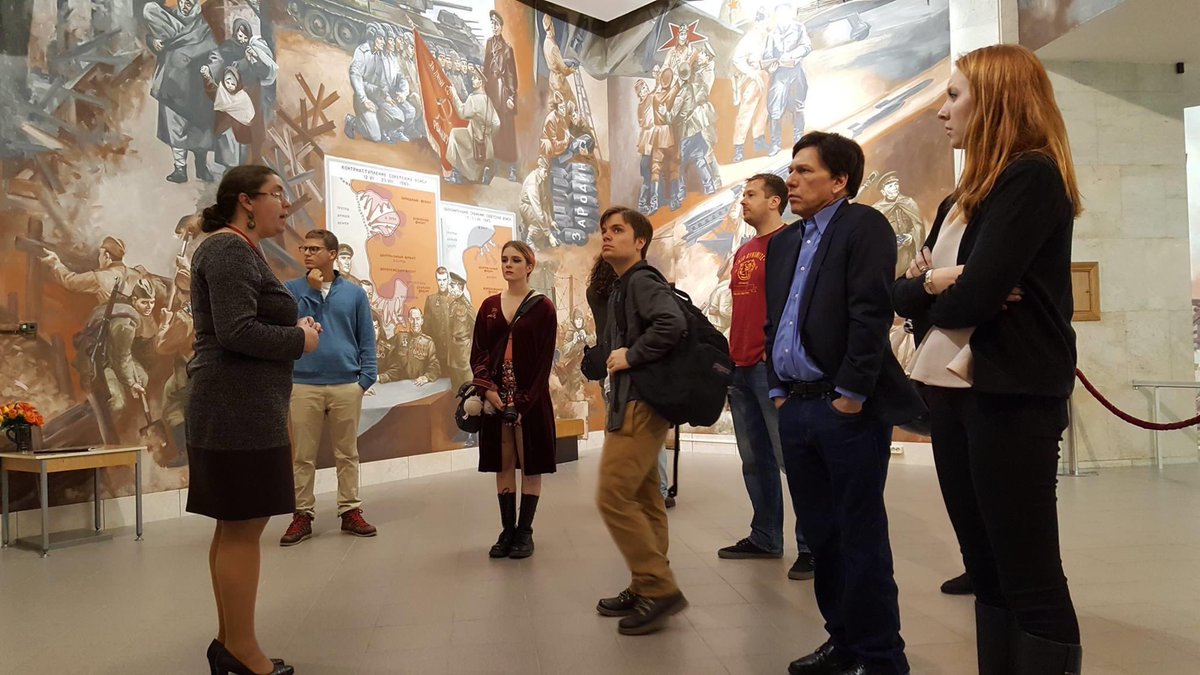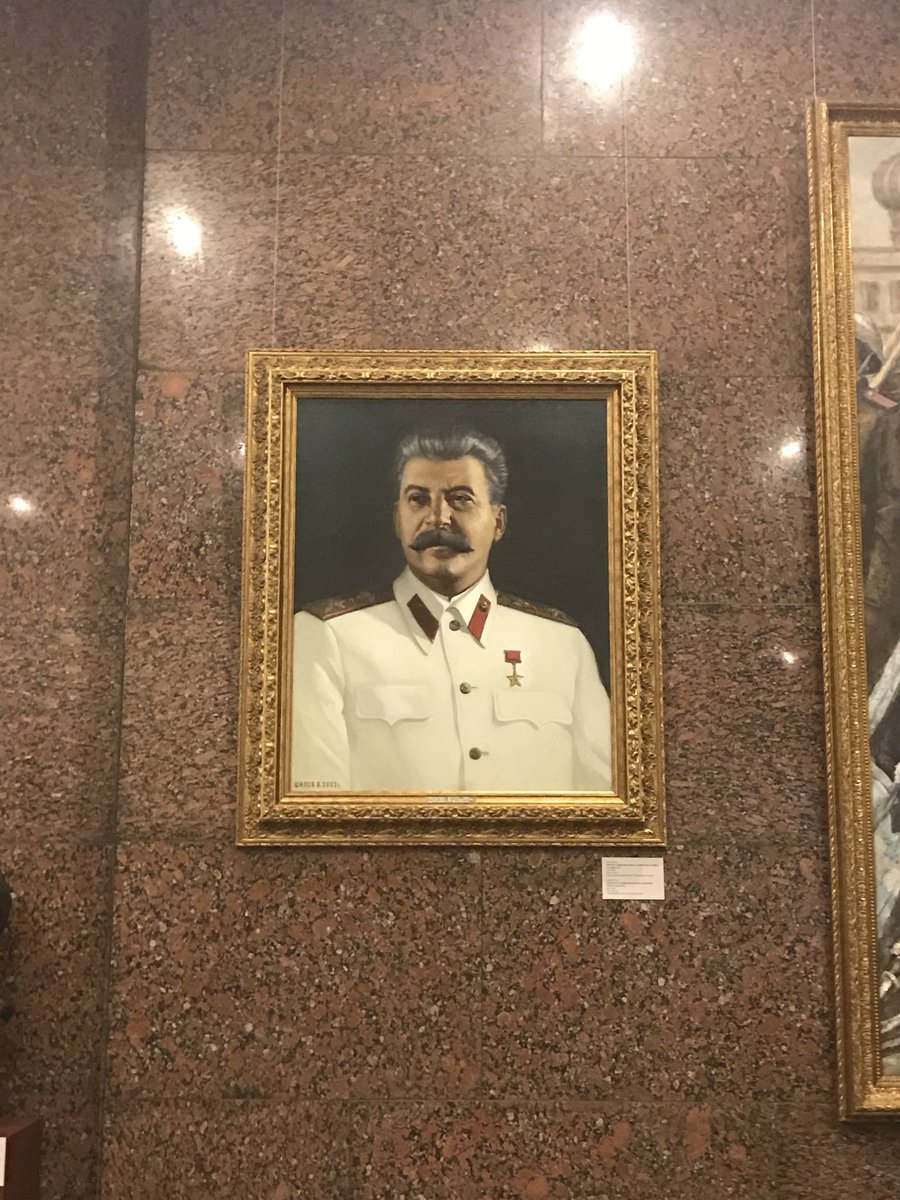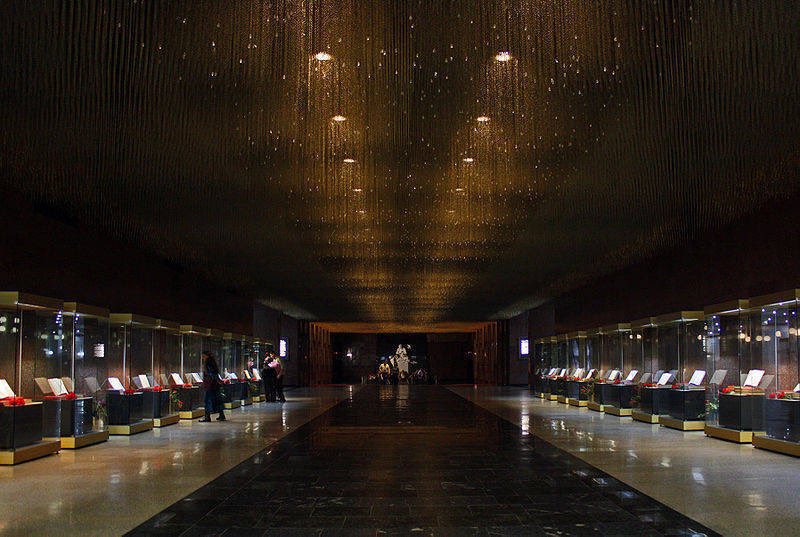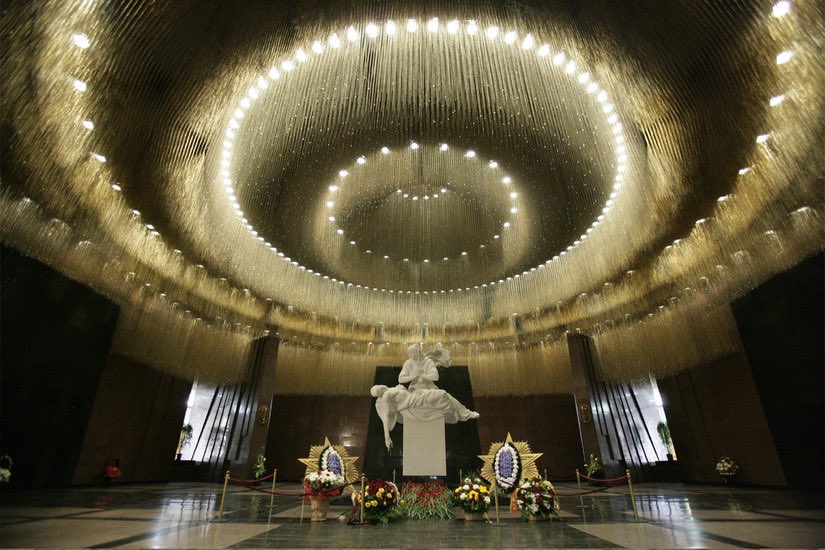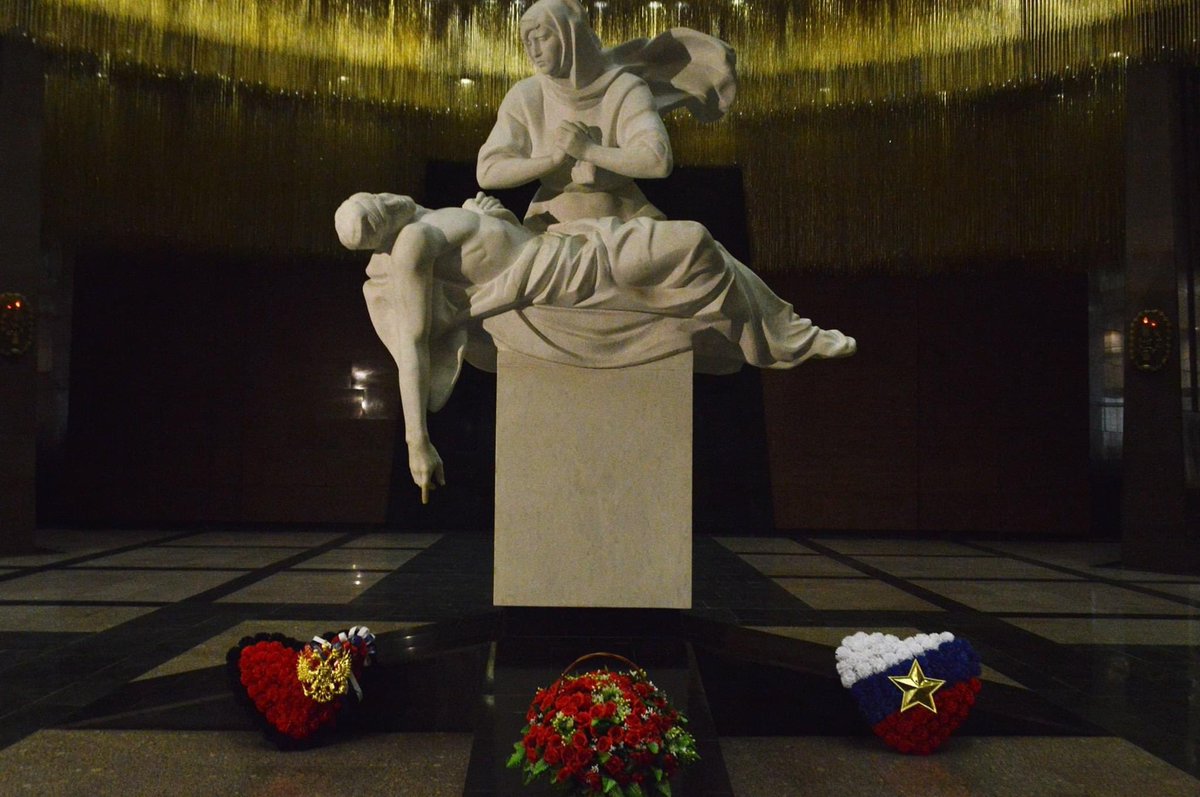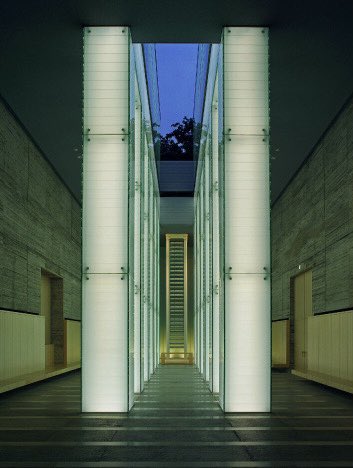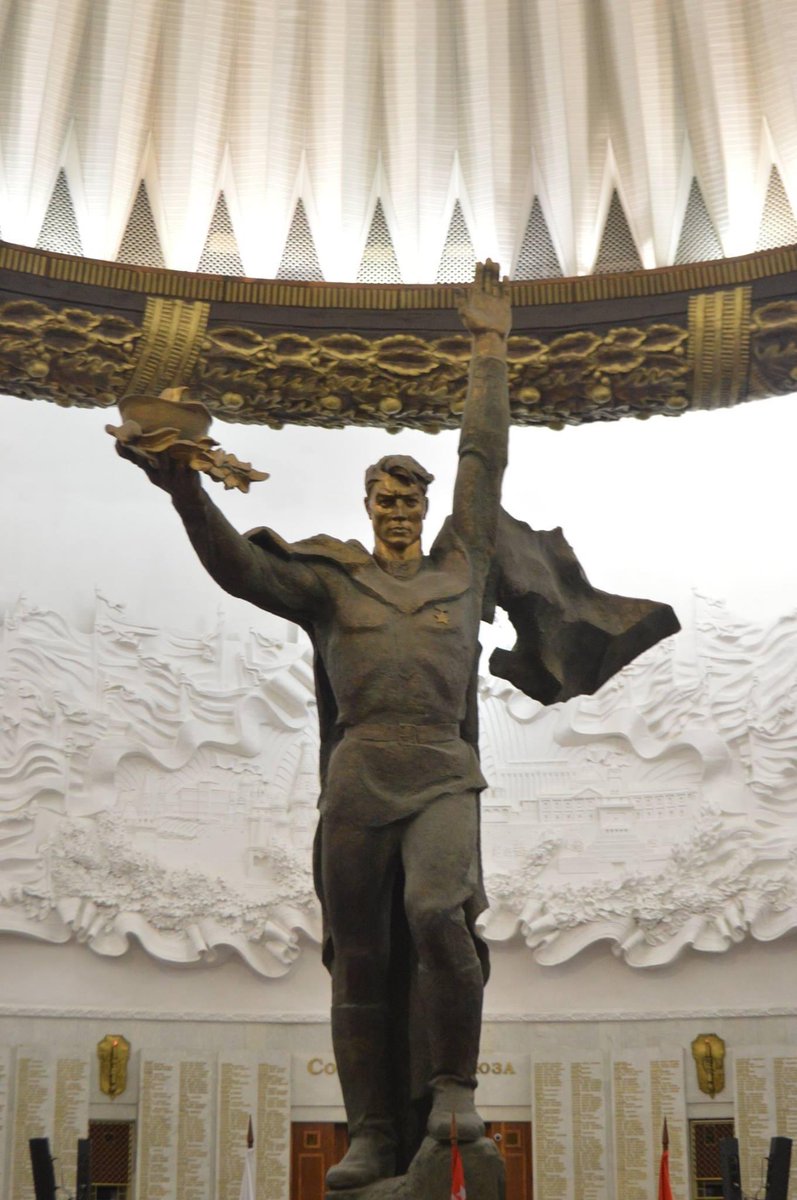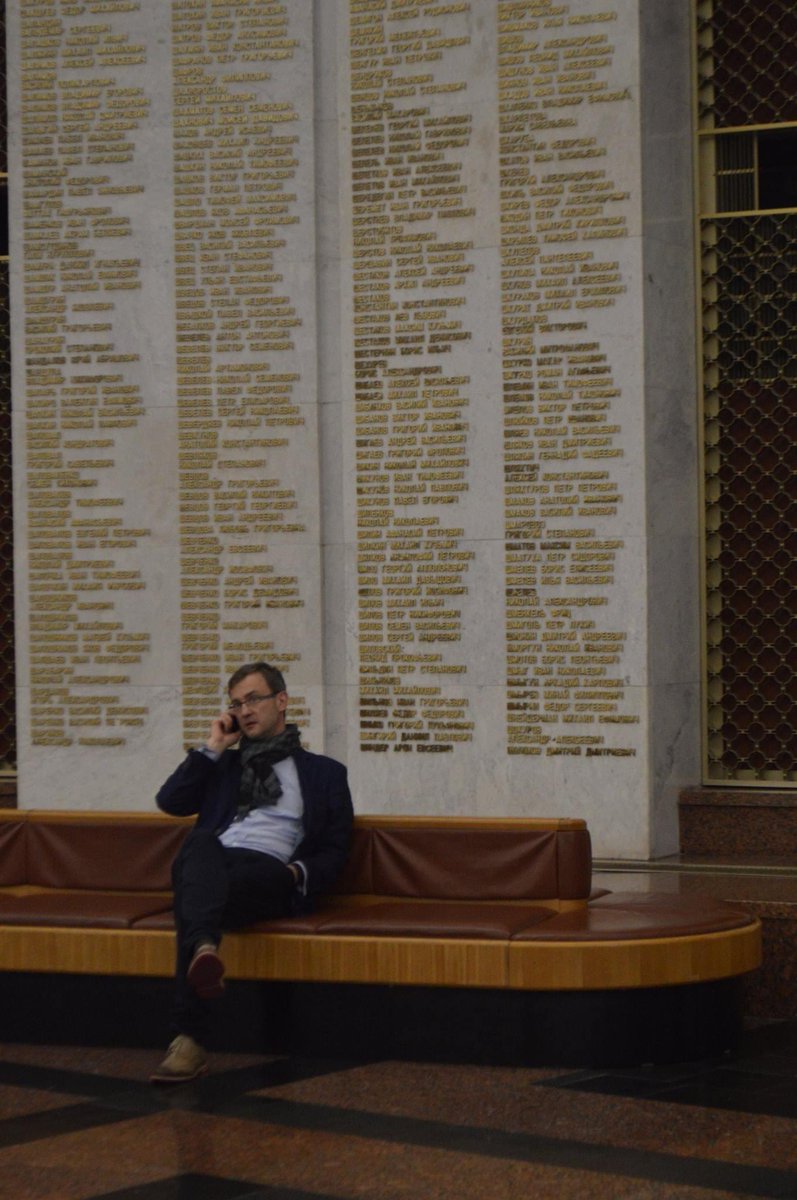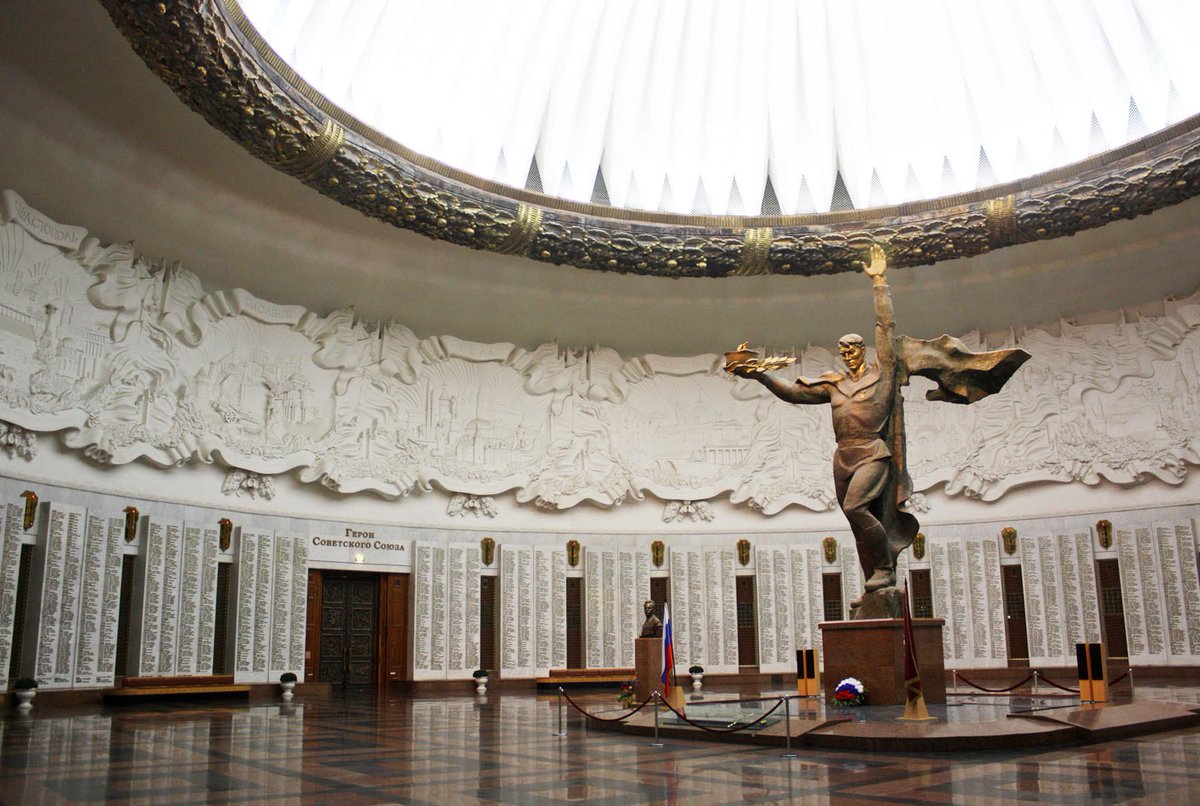the Museum of the Great Patriotic War, or Victory Museum, is the Russian national WWII museum. It was built during the final years of the USSR on a massive 5,000 acre complex called Victory Park with various monuments, houses of worship, and military installations.
It was built on Poklonnaya hill, which had strategic importance as the highest vantage point in Moscow, where Napoleon once stood on the verge of conquest. Before it was a WWII museum, an open air museum dedicated to Napoleon’s defeat was opened in the 60s.
The first thing you’ll notice is a massive obelisk forged from Soviet steel, designed to resemble Russian bayonets. Atop the obelisk is a statue of Nike, the goddess of victory, and below is St. George, patron saint of soldiers. It is 465 feet tall, 10cm for each day of the war.
The entrance hall is called the “Hall of Commanders”, and on either side are the annexes for temporary exhibits. It’s hard to tell from the picture but the stairs are apparently made from melted German metal, which you stomp over to get to the top. Pretty clever
At the top of the stairs are a ton of iron crosses and Nazi flags collected from Berlin post surrender
The setup from here on out is a bit strange. First you go through a number of dioramas of major battles (Stalingrad, Leningrad) with surround sound. The sound effects did their job of making me feel like I was there. The art adding context of each event is pretty cool too
It’s here I should point out that there is only one image of Stalin in the entire museum (besides the Stalingram which I’ll get to), tucked away in a corner in this section. Strange, but it makes sense for a museum that was built during Perestroika and opened post-collapse.
Next is the section that changed my life. The Hall of Sorrow is lined with strands of glittering crystals leading you to a Pieta. It’s here they inform you that each strand represents 10 Soviets who died in the war. When I was told this for the first time I broke down in tears.
Nothing has so devastatingly conveyed the magnitude of loss the USSR suffered as this. 27 million people, 15% of the Soviet Union’s population, died in the war. An infamous man once said “one death is a tragedy, a million a statistic.” But in this sacred place, you feel it.
The only other time I’ve been so profoundly moved by a memorial was at the reflection hall in the Nagasaki. After going down a hall with the nameless faces of hibakusha, you are forced to sit across from each other in silence and picture the people around you as those victims.
Historians constantly grapple with how to convey human suffering. Humans cannot deal in absolutes, and it’s natural for us to register little difference between 1,000,000 and 10,000,000. So I appreciate when art and education work together to help us feel that.
Next is a more traditional exhibit with lots of information, memorabilia, posters, and videos with details about the war (sadly very little in english). Finally there’s a hologram of Stalin and Churchill striking out the percentages agreement, their only private meeting.
The penultimate section is a scale model of the Reichstag and surrounding decimated Berlin. Just a cool “fuck yeah” moment lol https://twitter.com/roun_sa_ville/status/1391226250203631620">https://twitter.com/roun_sa_v...
Finally we have the massive Hall of Glory, lined with the names of the 12,000 soldiers who received the title of Hero of the Soviet Union. Along the edge of the dome are carvings of the major cities/regions in Russia (I forget if it’s cities, republics or battlegrounds)
Of course the museum is not without its flaws. They gloss over the nonaggression pact and frankly most details about the leadup to the war. There’s very little mention of the other Allies or the Holocaust (though there is a memorial synagogue in victory park)
I was bummed to see a mere placard given to the Romani, I have Roma ancestry. Your experience as an English speaker will come down to how good your guide is and what you’re actually trying to learn. Good to see cool shit and have an emotional journey that connects you to history
Overall it’s worth going just to see the sheer scale of the place, it is quintessentially Russian and the way the history is told can tell you a lot about the post-collapse zeitgeist. If you can’t make it, I hope you at least enjoyed the pictures. Lol

 Read on Twitter
Read on Twitter